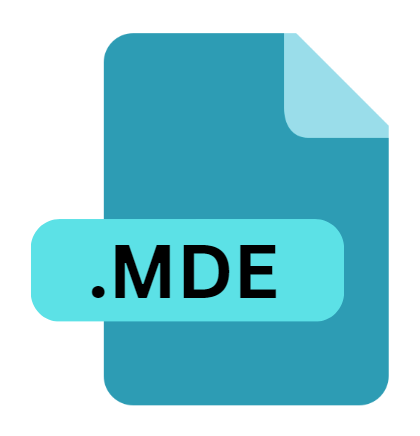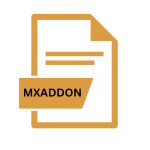.MDE File Extension

Compiled Access Add-in File
| Developer | Microsoft |
| Popularity | |
| Category | Plugin Files |
| Format | .MDE |
| Cross Platform | Update Soon |
What is an MDE file?
.MDE files are associated with Microsoft Access, a popular database management system (DBMS) used by businesses and individuals to create and manage databases.
These files are specifically compiled Access add-in files, which means they contain executable code that can be run within Access applications.
More Information.
The .MDE file format was introduced with Microsoft Access 97, although similar functionality existed in earlier versions under different file extensions.
The primary purpose of the .MDE format was to create a standalone version of an Access application that could be distributed to users without exposing the underlying code.
By compiling the Access application into an .MDE file, developers could protect their intellectual property and prevent users from modifying the application’s design or code.
Origin Of This File.
The .MDE file extension originated with Microsoft Access, which was first released in 1992. Access was designed to be a user-friendly database management tool, allowing users to create databases without extensive programming knowledge.
As Access evolved, the need for a way to distribute Access applications while protecting the underlying code became apparent. Thus, the .MDE file format was introduced to allow developers to compile their Access applications into a distributable format.
File Structure Technical Specification.
.MDE files contain a compiled version of the Access application, including all forms, reports, queries, macros, and modules.
When an Access database is compiled into an .MDE file, the original source code is converted into a binary format that is executable by the Access runtime engine.
This process removes the ability to view or modify the original source code, providing a level of security for the application.
The structure of an .MDE file is similar to that of a standard Access database file (.MDB or .ACCDB), but with the added compilation of the code and forms.
The file format is proprietary to Microsoft, and the specifics of the internal structure are not publicly documented.
How to Convert the File?
Converting an Access database (.MDB or .ACCDB) into an .MDE file is a straightforward process within Microsoft Access. Here are the general steps:
- Open the Access database (.MDB or .ACCDB) in Microsoft Access.
- Navigate to the “Database Tools” tab.
- Click on the “Database Tools” dropdown menu.
- Select “Make ACCDE” (for .ACCDB databases) or “Make MDE” (for .MDB databases).
- Choose a location to save the compiled file and click “Save.”
After completing these steps, Access will compile the database into the specified file format, creating either an .ACCDE or .MDE file.
Advantages And Disadvantages.
Advantages:
- Protection of Intellectual Property: By compiling an Access application into an .MDE file, developers can protect their code from unauthorized access or modification.
- Standalone Execution: .MDE files can be distributed as standalone applications, allowing users to run the Access application without needing the full version of Microsoft Access installed.
- Improved Performance: Compiled Access applications often have improved performance compared to their non-compiled counterparts, as the code is optimized for execution.
Disadvantages:
- Limited Flexibility: Once an Access application is compiled into an .MDE file, it cannot be easily modified or updated without access to the original source code.
- Compatibility Issues: .MDE files may have compatibility issues when used with different versions of Microsoft Access or with third-party tools that interact with Access databases.
- Debugging Challenges: Debugging compiled Access applications can be challenging, as developers do not have access to the original source code.
How to Open MDE?
Open In Windows
- Ensure you have Microsoft Access installed on your Windows computer.
- Double-click the .MDE file. It should automatically open in Microsoft Access.
Open In Linux
- Microsoft Access is not natively available for Linux.
- You can use Wine, a compatibility layer that allows running Windows applications on Linux, to run Microsoft Access. Install Wine if you haven’t already.
- Right-click on the .MDE file, select “Open With,” and choose Wine to open the file with Microsoft Access.
Open In MAC
- Microsoft Access is not available for macOS.
- You can use virtualization software such as Parallels Desktop or VMware Fusion to run Windows on your Mac.
- Install Microsoft Access within the virtualized Windows environment and then open the .MDE file as you would on a Windows PC.
Open In Android
- Microsoft Access is not available for Android.
- You can use remote desktop software such as Microsoft Remote Desktop or TeamViewer to connect to a Windows PC that has Microsoft Access installed.
- Once connected, you can open the .MDE file on the remote Windows PC using Microsoft Access.
Open In IOS
- Microsoft Access is not available for iOS.
- You can use remote desktop software such as Microsoft Remote Desktop or TeamViewer to connect to a Windows PC that has Microsoft Access installed.
- Once connected, you can open the .MDE file on the remote Windows PC using Microsoft Access.













